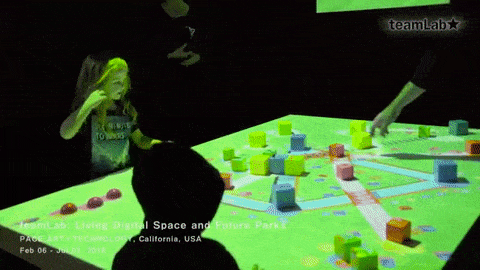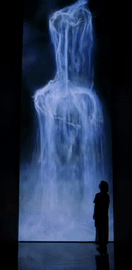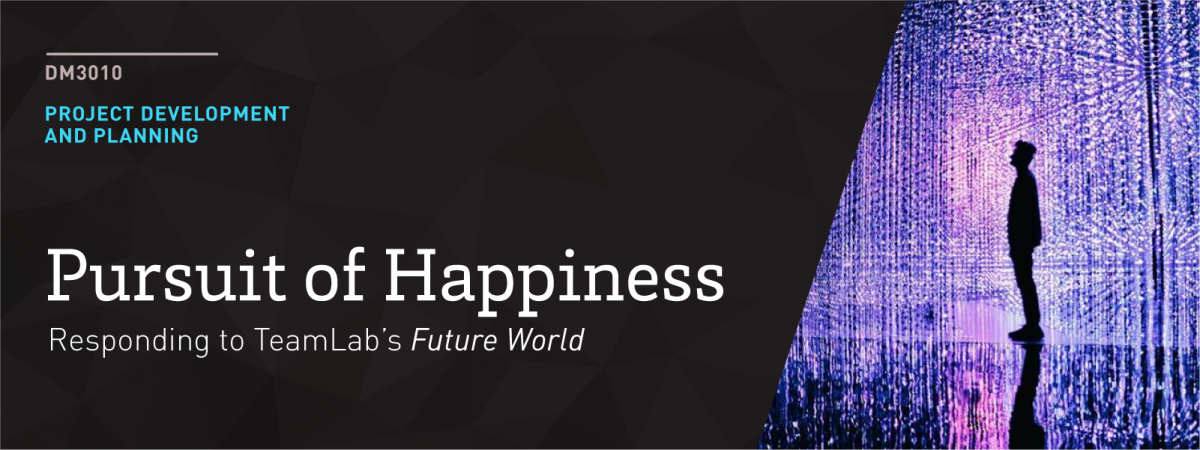While I have been down to TeamLab’s Future World exhibition many times before, this was the first time that I was there guided by someone actually from TeamLab. This really changed the experience of Future World for me and brought closure to the many unanswered questions that have been sitting idle in my mind from all the previous visits.
Being a self-professed technophile, I was enthused to discover that we would be toured around Future World by a member of TeamLab. Takasu was extremely gracious in answering the many questions I threw his way and brought about a new sense of appreciation for the work that went into making this exhibit a reality. The sharing session after the tour was also extremely useful in shedding some light on the philosophies of TeamLab and the thought processes that go behind these installations. Knowing this, in my opinion, is key to better understanding why TeamLab creates the works it does and why they bear these particular aesthetics.
I also managed to learn that many of these works were created with tools that I was already familiar with (albeit sprinkled with a lot of TeamLab customizations). This provided me the confidence to continue pushing down the path I am currently on with creating screen based art and interactive pieces for public spaces.
For Happiness & Enjoyment
One of the first things that Takasu made a point to emphasize was that TeamLab was really motivated to create experiences that would elicit emotions like joy and happiness from the audience. All their works feature an element of play in them – be it something straightforward like moving wooden blocks around, or something more abstract like the experience of controlling the visualizations in Crystal Universe. This concept is a fundamental motivating principle for TeamLab in their ideation process and this is very evident when looking at their works.

TeamLab works tend not to deal with topic of politics, social issues that is commonly seen in other contemporary art works. Instead, the focus on more relatable ideas easily understood by the general public such as nature and concepts surround the built environment. Their emphasis on playful experiences results in a simplification of communication which I initially found to be rather juvenile.
However, armed with the knowledge of understanding TeamLab’s process, I have begun to notice that this approach is far more effective in communicating the artists’ message compared to what others have been doing. Especially in the case of public art which Future World somewhat is. By appealing to the lowest common denominator, TeamLab creates artworks purely for the sake of enjoying art, with the message of the work deeply embedded in the playful interactions we have with the works. This is far superior to having an extremely conceptual work in a public art space whose purpose and message is completely lost on its audience. This hits quite close to home for me as I look back on the work that I have been doing on the Media Art Nexus in NTU.
Asian Sensibilities
Another thing that Takasu explained during the tour and sharing session was how TeamLab was guided by Asian Sensibilities in the ideation and conceptualization of the works, as well as their aesthetics.

All encompassing “directionless” space was cited by Takasu as a hallmark feature of TeamLab’s works. He mentioned how this way of thinking was unique to asian cultures, and especially Japanese culture, where TeamLab hails from. You can clearly see this in works such as Crystal Universe, where the use of mirrors and reflective floor surfaces heightens the experience of walking through a vast and limitless star field.
 The Japanese aesthetic is also retained in Universe of Water Particles. Despite being a digital particle simulation of water droplets that is deeply rooted in science, the cascading waterfall bears much resemblance to the landscape paintings of Edo period Japan with regard to its appearance. This seamless blending of asian cultures into their works help to make something “rigid and scientific” more approachable and inspiring. The scale of the work also echoes the ideas of engulfing the viewer into the experience, all in all, making the viewer feel like a part of the work and as if they really are standing next to a waterfall.
The Japanese aesthetic is also retained in Universe of Water Particles. Despite being a digital particle simulation of water droplets that is deeply rooted in science, the cascading waterfall bears much resemblance to the landscape paintings of Edo period Japan with regard to its appearance. This seamless blending of asian cultures into their works help to make something “rigid and scientific” more approachable and inspiring. The scale of the work also echoes the ideas of engulfing the viewer into the experience, all in all, making the viewer feel like a part of the work and as if they really are standing next to a waterfall.
Evolving Artworks & Iterative Design
The last take away I have for the trip is the process that TeamLab uses in creating and updating their art works. The discussion around digital contemporary art is always somewhat of an iffy topic. Critics and artists alike tend to skirt around it if possible. Digital artworks, unlike their physical counterparts, are not immutable. The code base is easily available and reproducible by the artists. Unlike a canvas that can only be painted once and immutable thereafter, a digital art work can take on many sizes and iterations based on how and where they are displayed.
TeamLab has done a god job of working with this particular property of digital art. Instead of shying away from its nature, TeamLab readily reproduce their work in various locations and in various formats. Each iteration of the piece allows TeamLab to explore new technologies and better optimize the work to in turn create better experiences for their viewers. This is something unique to creating works in the digital format and I am glad someone as influential as TeamLab is championing this.

